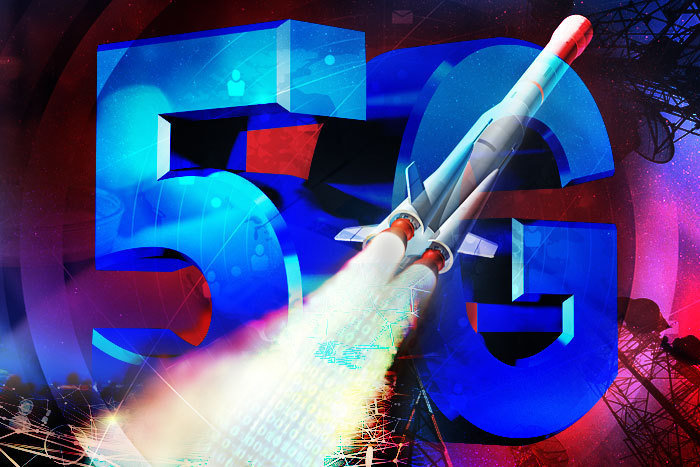Wirelessly enabling IoT/EoT: And the winner is … ?
There are now many viable IoT devices on the market — from exercise and health bands, to home automation and connected appliances, to drones and connected cars. And many more classes of devices will be created in the next couple of years.
Yet the benefits of IoT, and especially enterprise of things (EoT) within the business environment, can’t really be maximized without connectivity to capture data and create actionable intelligence. Smart meters, fleet management, logistics and healthcare are just some of the potential markets that can be transformed by IoT/EoT.
The race is on to find the right technologies to connect these devices. Some devices will be in fixed locations, but many will roam over a wide geographic area requiring connection to wide-area networks — and the battle lines to enable this are being drawn.
I expect the winning solutions to be driven by availability of high-volume and low-cost radios that can be coupled to processors in SoCs and shipped in volume to IoT manufacturers. For short ranges, the latest version of Bluetooth and Wi-Fi will be sufficient.
But wide-area connections are different. Proprietary and/or non-industry accepted deployments are unlikely to succeed. Initial proprietary systems like Sigfox and LoRa may have a head start, but will ultimately fail to garner the needed critical mass to make them sustainable longer-term.
Industry-adopted standards like LTE Cat M1 and NB-IoT leading into 5G as defined by 3GPP that can easily be rolled out on top of existing infrastructure (today’s carrier networks) and have the support of component suppliers (e.g., chip vendors like Qualcomm and carrier infrastructure players like Ericsson, Huawei and Nokia) will ultimately gain market advantage and win out over proprietary and less fully geographically deployed solutions.
Meeting IoT wireless requirements
Not all of the 50 billion-plus IoT devices estimated to be in use in the next three to four years will need wireless connectivity, but I estimate that 40% to 50% will.
The emergence of 20 billion-plus connected devices will put a severe strain on the wireless infrastructure. New methods of connecting, from very high speed to very low intermittent connections, will need to be available. A high quality of service — not only in connection speed but, for many critical devices, low latency of information flow — will be mandatory.
Several proprietary wide-area solutions are coming online, like Sigfox and LoRa. Other technologies are being extended for local-area needs, like Bluetooth 5 and low-power Wi-Fi. New, very high-frequency channels (mmWave) are being opened up and will need to be integrated with the other options.
The key to making all of this work seamlessly for consumers and business users will be radio band/format aggregation, leveraging existing infrastructure, and a capability to efficiently roll out to large-scale users/POPs across wide geographic areas.
Making it all work
Wide-area connections with roaming capability will be one of the biggest challenges. It’s unlikely, especially in business, that users will be willing to go to multiple carriers/sources and have multiple contracts. This didn’t work so well back in the early days of Wi-Fi (and enabled aggregators like iPass to build a business around easing the service provider/cost complexity).
It’s problematic as to how to provide for roaming across geographic boundaries. Fixed-location IoT connections like Bluetooth and Wi-Fi will be important, but likely not a majority of the connections long-term (e.g., autonomous cars, drones, moving/remote sensors).
At the end of the day, a standards-based wide-area approach that encompasses all the requirements, with compatibility across carriers and geographies and leveraged scalability, will be the determining success factor. This can only realistically be achieved by an industry-standardized approach. And as much as some may not like their current wireless carriers, they are in the best position to pull all the factors together and make IoT/EoT wide-area connectivity real.
Getting it deployed
The implementation is well underway, with standards bodies (3GPP) leveraging LTE technology into the coming 5G to accomplish cross-platform aggregation, quality-of-service standards, security and backward-compatibility with much of today’s wireless infrastructure. I expect a carrier implemented standards-based approach to win out for wide-area IoT/EoT connectivity. This includes leveraging specialized services within the standard to address specific IoT needs (e.g., NB-IoT, Cat M1) that are an overlay on existing LTE networks.
For example, Telstra in Australia has already enabled Cat M1 capabilities on its networks and is seeing increasing demand, particularly in energy and metering, with longer-term expectations that agriculture and healthcare systems will also benefit from this capability. According to Telstra, as a result of ongoing long-range planning and strategy with its key vendors, it was easy to add Cat M1 and NB IOT capability to the existing network. It was simply a software upgrade with no need for additional capex investment. And due to economics of scale, Telstra determined that standards-based deployments are the way to go longer-term.
The rollout is underway at many other carriers. AT&T has committed to deploying Cat M1 to its entire footprint by mid-2017. Verizon has also committed to Cat M1, and international carriers like Orange and SoftBank are extending their existing LTE footprint to include Cat M1.
With such momentum and the ability for carriers to quickly provide a nationwide footprint with a software upgrade, it will be very hard for alternative networks to build momentum and critical mass. In addition, with major modem vendors like Qualcomm committed to Cat M1 and NB-IoT and supplying their huge network of device makers, it’s highly likely that IoT/EoT device makers will take advantage of the deeply integrated modems shipped inside IoT class SoCs.
The need for wireless connectivity for a host of new and existing IoT/EoT devices will grow dramatically over the next few years. I expect that carriers using industry-standard Cat M1 and NB-IoT capability will capture the majority of the market, and that competing solutions will be relegated to niche status.
This article is published as part of the IDG Contributor Network. Want to Join?







